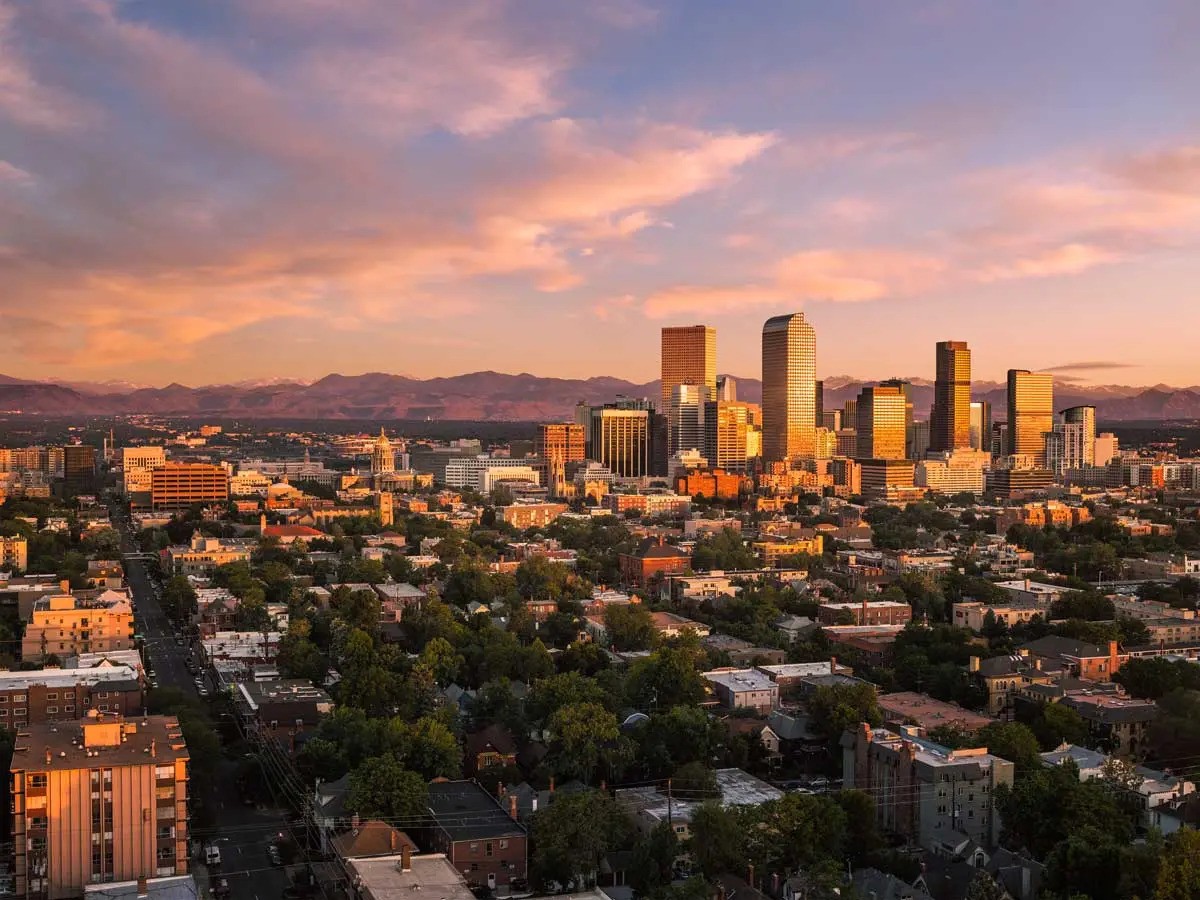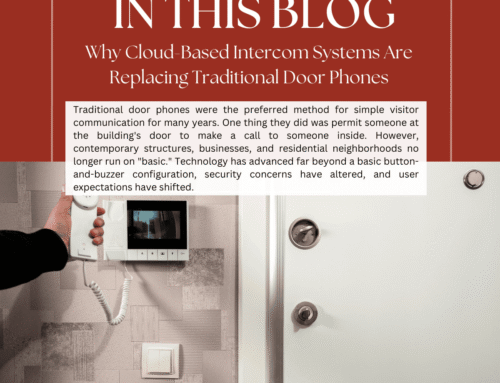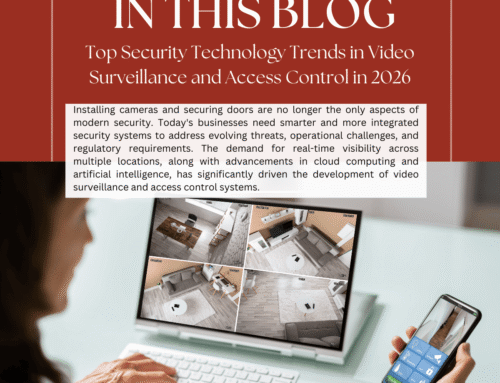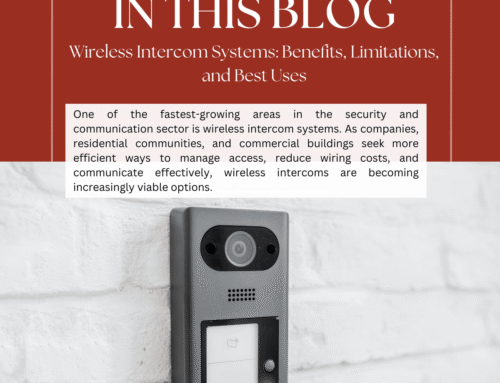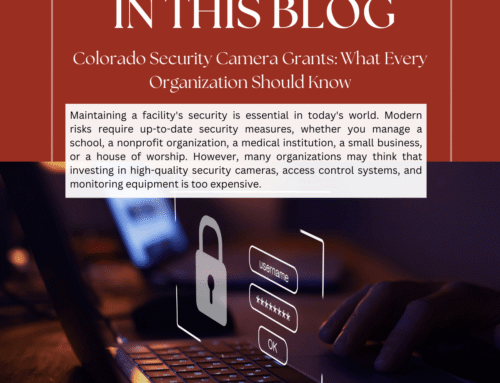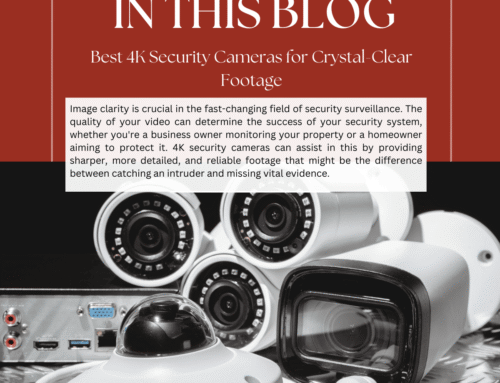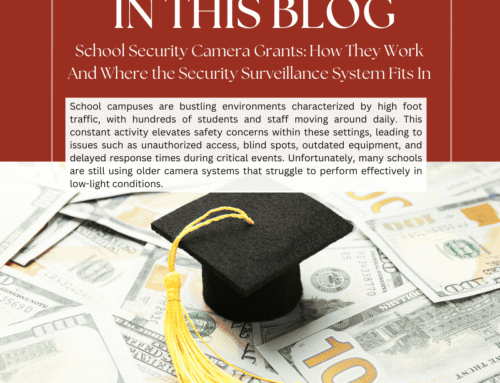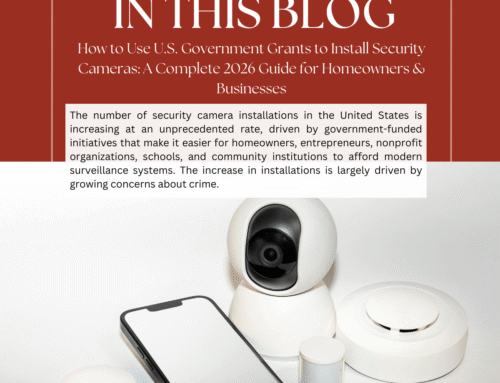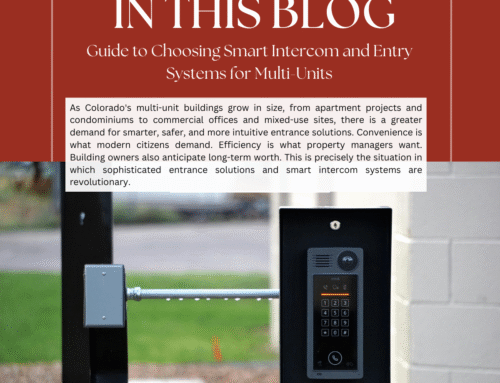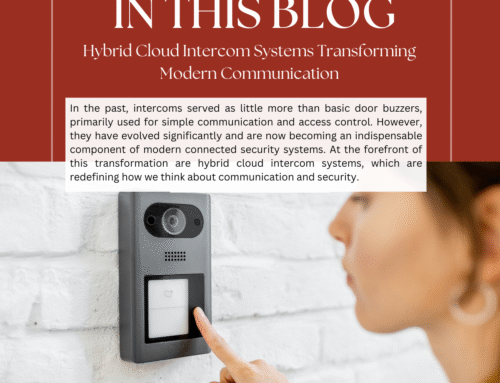4 Ways to Improve the Safety and Security of Your Retail Store in Colorado
Running a retail store comes with many responsibilities — from ensuring excellent customer service to managing inventory and creating a welcoming atmosphere. But one area that’s often underestimated is safety and security. A secure store not only protects your business from losses but also provides peace of mind to your employees and customers.
With the right strategies, you can deter theft, prevent incidents, and create a safe environment that encourages trust and loyalty. In this blog, we’ll share four effective ways to improve the safety and security of your retail store. Whether you operate a boutique, grocery shop, or multi-location retail chain, these practical steps will help you safeguard your people, property, and profits.
1. Invest in a High-Quality Surveillance System
One of the most powerful ways to enhance your retail security is by investing in a high-quality surveillance system. Video surveillance acts as both a deterrent and a source of evidence, helping store owners monitor activity in real time and respond quickly to suspicious behaviour.
Why Surveillance Matters
According to the National Retail Federation (NRF), retail shrinkage — losses from theft, fraud, and errors — cost U.S. retailers over $100 billion annually. A properly installed surveillance system not only discourages theft but also helps identify culprits and provide law enforcement with crucial evidence when incidents occur.
Cameras can also improve operational efficiency. By monitoring traffic flow, you can identify high-traffic zones, optimise product placement, and even assess staff performance to ensure better customer service.
Features to Look For in a Modern Security System
When choosing a surveillance system for your store, consider these essential features:
-
High-Definition (HD) Cameras: Ensure crystal-clear video quality, even in low-light environments. HD footage makes identification easier.
-
Wide-Angle and Pan-Tilt-Zoom (PTZ) Capabilities: Cover large areas and adjust viewing angles remotely.
-
Cloud or Hybrid Storage: Protects your recordings even if physical equipment is damaged or stolen.
-
Motion Detection and Alerts: Receive instant notifications when unusual activity is detected.
-
Remote Access: Monitor your store from your phone or laptop, anytime and anywhere.
Strategic Placement of Cameras
For maximum coverage, place cameras in strategic areas:
-
Entrances and exits
-
Cash registers or checkout counters
-
High-value product displays
-
Storage rooms and loading docks
-
Parking lots and exterior entrances
Be sure to display visible signage informing customers that your premises are under surveillance. This not only complies with legal requirements but also acts as a psychological deterrent against theft.
At Security Surveillance System, we specialise in designing and installing customised camera systems tailored to retail environments — ensuring every angle of your business is protected.
2. Consider Hiring Qualified Security Personnel
Technology is powerful, but nothing replaces the presence of trained security personnel. Professional guards bring a human element to your security strategy — one that technology alone cannot replicate.
Benefits of Having On-Site Security Staff
-
Immediate Response: Security officers can respond instantly to thefts, emergencies, or suspicious behaviour, preventing small incidents from escalating.
-
Visible Deterrent: The sight of uniformed guards often discourages potential shoplifters or vandals from acting.
-
Customer Reassurance: Shoppers and employees feel safer knowing trained professionals are present.
-
Emergency Management: Security personnel are often trained in first aid, evacuation procedures, and conflict resolution, making them invaluable in crisis situations.
Choosing the Right Security Team
When hiring or contracting security personnel, look for:
-
Proper licensing and certification under state regulations.
-
Experience in retail environments, especially handling high-traffic areas.
-
Strong communication and de-escalation skills to manage conflicts calmly.
-
Knowledge of surveillance technology and incident reporting protocols.
In larger stores or malls, a combination of static guards and mobile patrols ensures full coverage across entry points, parking lots, and sales floors. Some businesses also employ plainclothes loss prevention officers who blend in with customers and discreetly monitor for suspicious behaviour.
Integrating Personnel with Technology
A strong retail security strategy combines human intelligence with modern surveillance tools. Security staff should have access to live camera feeds, alarm systems, and emergency communication channels. This integration allows them to act quickly when an incident occurs, ensuring seamless coordination and faster response times.
3. Train Your Employees on Safety and Security Procedures
Your employees are the eyes and ears of your business. By empowering them with proper training and awareness, you can significantly reduce the likelihood of theft, fraud, or workplace accidents.
Importance of Employee Training
Many retail incidents occur not because of a lack of technology, but because employees aren’t sure how to react. Training equips them to handle challenging situations — from managing aggressive customers to spotting suspicious activity.
A well-informed team contributes to a safer work environment, minimises risk, and improves morale. When employees feel protected, they perform better and engage more positively with customers.
Key Areas of Retail Safety Training
-
Theft and Shoplifting Prevention
Teach employees how to recognise potential shoplifters, monitor high-risk zones, and follow proper procedures if they suspect theft. Make sure they never confront suspects directly — instead, report incidents to management or security staff. -
Cash-Handling Safety
Establish strict cash management policies, including limiting the amount of cash in registers, using drop safes, and never counting money in public view. Encourage staff to stay alert during opening and closing hours when theft risks are highest. -
Emergency Procedures
Conduct regular drills for fire safety, natural disasters, and security threats. Every employee should know evacuation routes, emergency contacts, and how to use alarm systems. -
Conflict De-Escalation
Train your team to handle difficult customers calmly and professionally. Techniques like maintaining a respectful tone, keeping physical distance, and seeking assistance from supervisors can defuse volatile situations. -
Cyber-security Awareness
In today’s digital age, retail safety extends beyond physical spaces. Educate employees about phishing scams, password protection, and secure POS (Point of Sale) operations to protect sensitive customer data.
Building a Culture of Safety
Security should not be a one-time discussion — it should be part of your company culture. Schedule regular refresher courses and encourage open communication. Create a system where employees can report suspicious activities or unsafe conditions anonymously. Recognition programs for employees who follow best practices can also reinforce the importance of safety.
4. Take Proactive Steps to Prevent Theft
Theft prevention goes beyond surveillance and guards — it’s about creating a layered strategy that addresses vulnerabilities at every level. Whether it’s shoplifting, employee theft, or organised retail crime, proactive measures can significantly reduce risk.
Implement Strict Return and Exchange Policies
Return fraud is one of the most common types of retail theft. Clear, well-communicated return policies help protect your business. Consider:
-
Requiring receipts or proof of purchase.
-
Limiting the time-frame for returns.
-
Using digital receipts to track transactions.
-
Flagging frequent returners in your POS system.
Make sure policies are displayed prominently near checkout counters and on your website to avoid misunderstandings.
Use Anti-Theft Devices and Smart Technology
Modern retail security tools can drastically reduce shrinkage:
-
Electronic Article Surveillance (EAS) Tags: Trigger alarms if unpaid merchandise leaves the store.
-
RFID Systems: Allow real-time tracking of inventory to detect missing items quickly.
-
Smart Shelves: Alert staff when items are removed suspiciously or in bulk.
-
Access Control Systems: Limit entry to sensitive areas like stockrooms and offices.
Conduct Regular Inventory Checks
Routine inventory audits are essential for spotting discrepancies early. Compare physical stock counts with system data to detect shrinkage patterns. Use analytics from your POS system to identify products most at risk of theft and adjust your security focus accordingly.
Optimise Store Layout and Lighting
Design your store with visibility in mind:
-
Keep aisles clear and well-lit.
-
Avoid blind spots that make it easy for thieves to conceal items.
-
Position checkout counters near exits to monitor customers as they leave.
-
Install convex mirrors to increase visibility in hidden corners.
Leverage Customer Engagement
Believe it or not, attentive customer service is an effective anti-theft strategy. Greeting customers as they enter, offering assistance, and maintaining a visible staff presence make it harder for shoplifters to act unnoticed.
Additional Tips for a Safer Retail Environment
Beyond the four core strategies above, here are some bonus tips to further enhance your retail security:
-
Install Panic Buttons: Allow employees to discreetly alert authorities during emergencies.
-
Use Alarm Systems: Integrate door sensors and glass-break detectors for after-hours protection.
-
Secure Entry Points: Reinforce doors, windows, and locks, especially in storage and delivery areas.
-
Maintain Exterior Safety: Keep parking lots well-lit, and install cameras to monitor vehicles and entrances.
-
Review and Update Your Security Plan Annually: As threats evolve, so should your strategy. Conduct yearly reviews with your security provider to identify gaps and upgrade systems as needed.
Conclusion: Create a Safe and Secure Retail Space with Expert Help
A secure retail environment doesn’t happen by accident — it’s the result of planning, investment, and commitment. By installing a high-quality surveillance system, hiring professional security personnel, training employees on safety protocols, and implementing theft prevention measures, you’ll create a safe environment that protects your employees, customers, and bottom line.
At Security Surveillance System, we specialise in helping retail businesses in Colorado and beyond strengthen their security infrastructure. From advanced camera systems to integrated monitoring solutions, our experts design customised setups tailored to your store’s layout and needs.
Let’s make your retail space safer — for everyone who walks through your doors.
Contact us today to learn more about our surveillance systems and security services, and take the first step toward a more secure future for your business.


